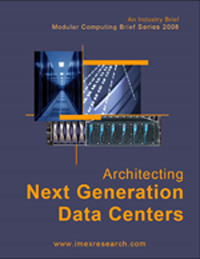
Data Center Infrastructure
Server and storage virtualization will one day converge, enabling unified, and even autonomic, management of today's distinct systems environments.
Virtualization allows users to see resources without getting deep into its physical locations and configurations. End user can treat them as a utility and can tap in according to their requirement. The convergence of server and storage management virtualization are driven by:
Key Elements of Virtualization
Data center service management:
Many IT executives increasingly want to assign and maintain service levels at the application level, which will require better management of server and storage resources as groups instead of single entities.
Data center automation tools:
These tools, which provision application, network and other resources, increasingly will take advantage of the availability, monitoring and utilisation capabilities of server and storage virtualisation collectively.
Blade servers:
As more customers deploy blade servers, the need to virtualize the server hardware will increase to mask the physical number of servers working on a specific application. At the same time, these servers will need to integrate tightly with storage networks because of the reliance on network storage.
Network storage:
Today, storage virtualization is actively used to manage SANs. As storage networks become more prolific for Fibre Channel and IP networks, the need to integrate with server virtualisation technologies will increase at the array, host and in the storage network itself.
Grid computing and storage:
Grid computing and grid storage technologies rely on virtualisation to develop a common pool of resources (servers and storage). As these models accelerate with more commercial deployments, corporate IT executives increasingly will want to view resources via a master management console that gauges their availability, performance and utilisation.
ILM (Information Life Cycle management):
This is a new storage deployment philosophy for managing the lifecycle of data from its creation to deletion. As part of this environment, the need to maintain service levels in support of specific application services will require management tools that can tap into server and storage virtualisation to monitor the environment.
Players:
Currently the developments in the area of storage and server management convergce are driven by server and storage vendors like EMC, HP, Sun, Dell , Network Alliance , IBM and management software vendors like CA and Veritas. Many of these companies are inorganically adding companies to broaden their portfolios.
Autonomic Computing:
This includes allowing servers and storage infrastructure that will self-heal, dynamically change as requirements increase or decrease, and provide transparent migration of applications to servers and storage systems. |







